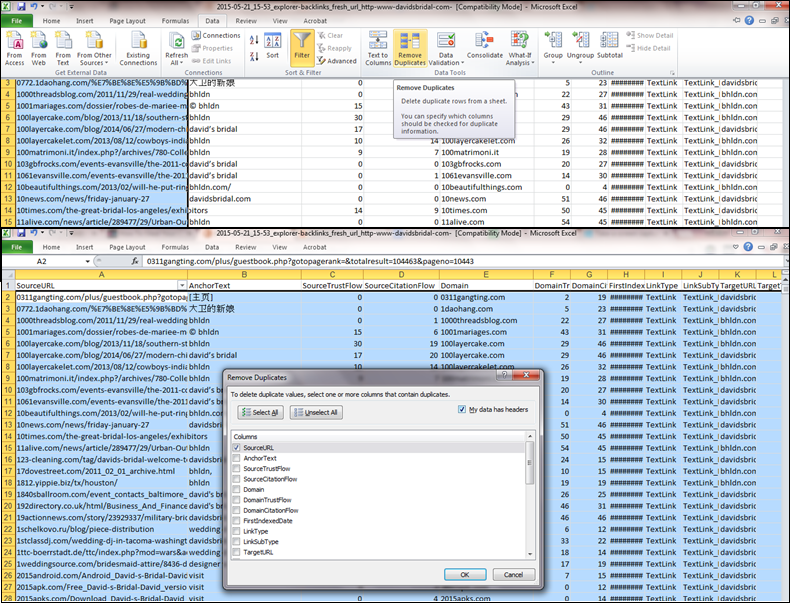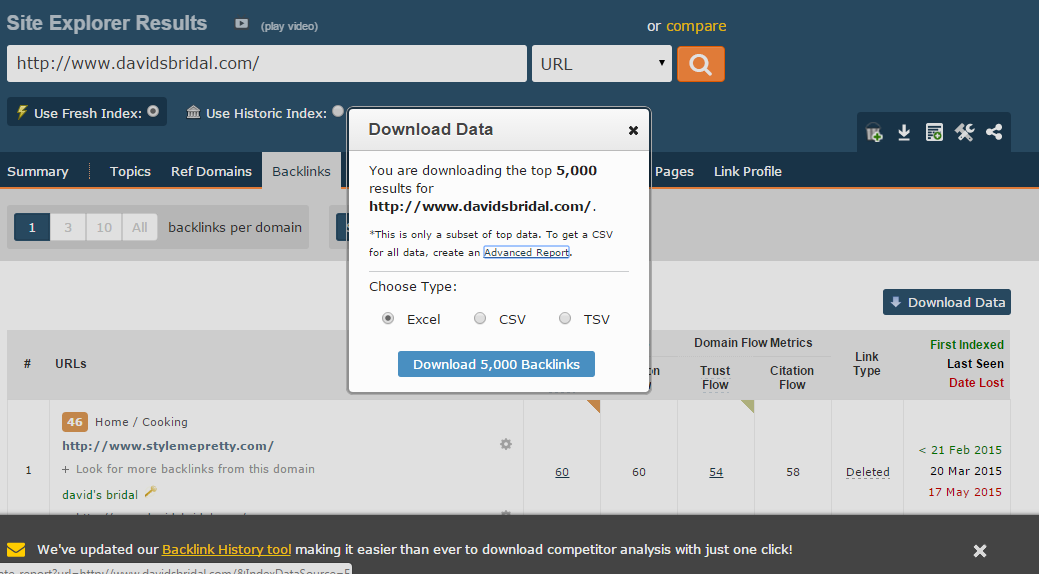
When looking to improve in anything, be it a sport, hobby, or profession, one of the first things to do is to look to others that are better than you. What have they done and what do they continue to do to be the best? How can you mimic their practices to reach similar or better outcomes? The same is true when it comes to Google rankings: you want to take a look at what the top sites in your industry are doing so you can learn how to achieve the desired results.
Step 1: Identify your Competitors
The first thing you want to do is identify who your competitors are in the space. Most likely you already have this list, but you’ll also want to do some research within the search engines. Your obvious competitors may not be the only ones hanging out on page one. Taking a look into indirect competitors can also give you a better understanding of the industry. You can begin by searching your industry keywords in Google and take note of the sites that continually show up. You’ll also want to try some long tail keywords and see who holds the top positions. For example, if your website sells wedding accessories, your searches might look like this:
- wedding accessories
- bridal accessories
- wedding hair accessories
- buy wedding accessories
- where can I buy wedding accessories online
Step 2: Pull the Backlinks
Once you have your list competitors identified, you can begin your first round of backlink review. There are many tools that can be used for this step including MOZ Open Site Explorer, MajesticSEO, Raven Tools, Ahrefs, or SEO SpyGlass. Most backlink tools allow you to download your backlinks into a spreadsheet which will make filtering/reviewing easier. Today we’ll be looking at backlinks from MajesticSEO.
I exported backlinks from the top two competitors for the wedding accessories keywords: David’s Bridal & BHLDN.
Step 3: Organize and Filter the Data
Once you have exported the lists, copy data from spreadsheet 2 and paste into spreadsheet 1 so they are all together. It is much easier to have all the data in one place. Follow the steps below to quickly cleanse your data:
- Remove all http://www. You can do this by using CTRL+F. On the Replace tab, in the “Find what” field, you want to add in http://www.
- Leave the “Replace with” field blank and then click “Replace All”.
- Do the same thing for http://, www. and https:// as these are also commonly found in URLs.

- Remove any duplicates. You can easily do this by highlighting Column A. Then under the Data tab, select Remove Duplicates.
- The only two boxes that should be checked are the SourceURL (under Columns) and My data has headers box on the top right (bottom screenshot).

Step 4: Review Sites for Link Potential
Now that you have a clean list, you can begin the review process. This is where the other data on the spreadsheets will come into play. Below are the factors that you want to look at:
- Domain Authority (100-point scale, the higher the better)
- Page Authority (100-point scale, the higher the better)
- Top Level Domain (.edu, .org, .com, etc. This post from MOZ is a good read for domain best practices if you are unfamiliar)
- Page Rank (10-point scale, the higher the better)
- Number of Links from Site
- Flow Metrics (Citation flow & trust flow.) Citation Flow is a number of predicting how influential a URL might be based on how many sites link to it. Trust Flow is a number predicting how trustworthy a page is based on how trustworthy sites tend to link to trustworthy neighbors. Both are scored on a 100-point scale, closer to 100 the better.
These factors can all help you quickly filter out sites, and will give you a solid list to start with. But keep in mind you will still want to review the sites on your own to make sure it is a good fit for your company. Just because your competitor has a link from a certain site, does not mean that it’s a fit for your company, nor does it mean it’s a good site overall.
Step 5: Assess the Situation
Now that you have a list of your competitors’ strong backlinks, you also want to see what else is impacting their rankings:
- How many unique domains are linking to their site?
- What type of anchor text is used? How varied is it? (branded, keyword rich, etc.)
- How many links do they have per domain?
- What types of sites are linking to them? Blogs, discussion boards, links pages?
- What does their link profile have that mine is lacking?
- What types of links are the most widespread?
With these questions, you should be able to narrow down your competitors’ strategies, where their links are coming from and how they are attained. From here you can determine which of their strategies can be applied to your SEO campaign and begin to acquire quality backlinks of your own.

